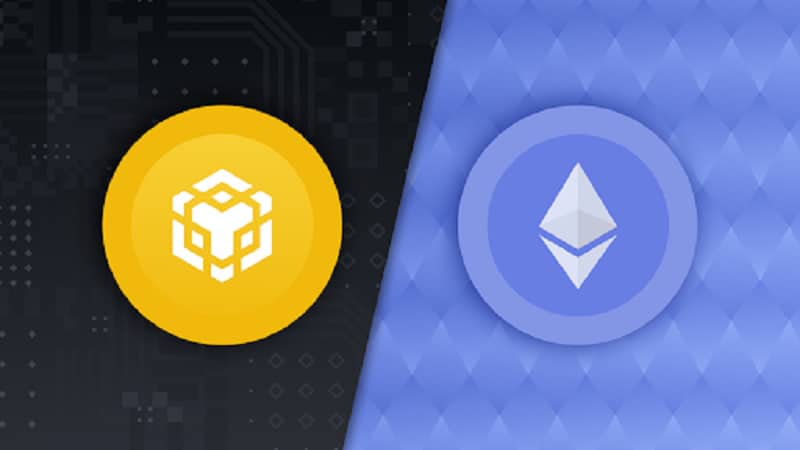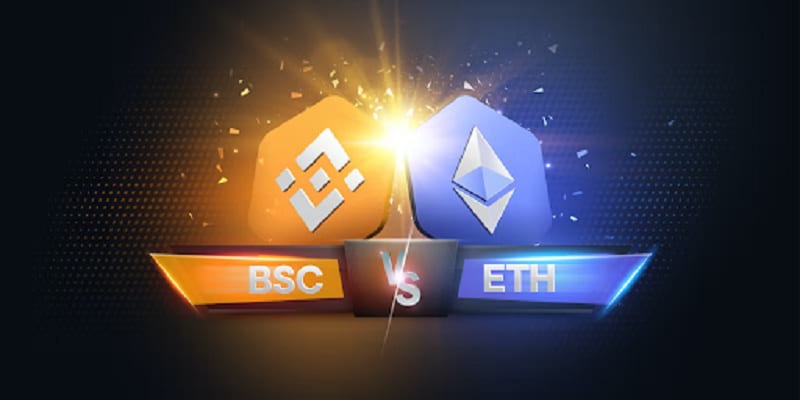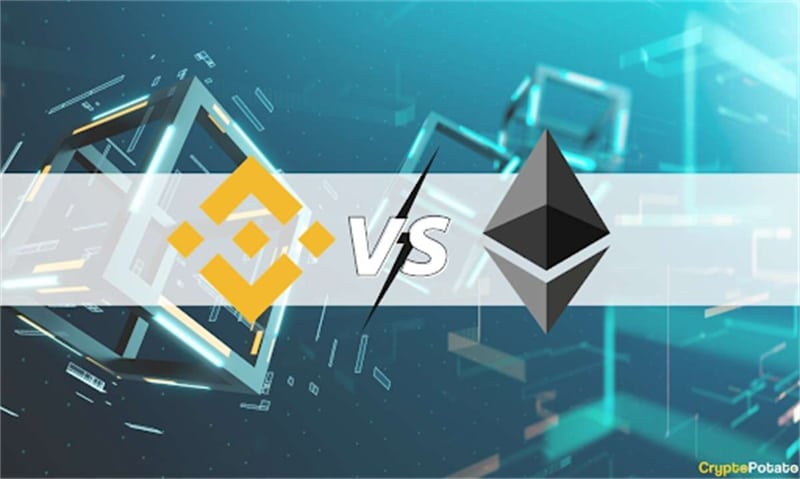
Even though the English news media favors Ethereum, Binance Smart Chain is still popular in other countries. Let’s compare BNB Chain vs Ethereum.
Binance Coin is used for the gas instead of Ethereum (ETH) so that the Binance Smart Chain (BSC) can function (BNB). In lieu of Ethereum's Go client, Geth, the cryptocurrency exchange Binance has implemented a Proof of Staked Authority consensus technique.
Because of the Proof of Staked Authority protocol, BSC is able to make unilateral changes to block timings and gas limits. When compared to Ethereum, BSC is capable of processing a bigger number of transactions per second and a more extensive data collection. In order for BSC to fulfill these aims, Ethereum's decentralization and censorship resistance are both severely compromised.
Ethereum vs. Binance Smart Chain

Many individuals have not given much attention to the possibility of making a direct comparison between Ethereum and Binance Coin. As a result of the obvious media bias, a large number of readers in Western countries feel that ETH is fundamentally better than BSC.
Despite this, BSC is the third-biggest layer 1 blockchain; it has already exceeded ETH since its ICO; it is endorsed by the most important cryptocurrency exchange in the world; and it only has one-fifth of ETH's Total Value Locked.
It is important to examine any preconceived notions you may have about BSC, particularly if you are a reader from the United States. For example, those living in the United States are being advised to visit Binance.US rather than Binance.com. In spite of this, Binance.US only registers roughly 3% of the daily spot volume that Binance.com does.
The fact that 97% of BSC use may take place outside of the United States may be the single greatest figure to sum up the widespread underestimation of BSC among American readers. [Citation needed]
A greater number of shared features than unique ones

The phrase “world computer” was the first moniker given to the blockchain technology that underpins Ethereum. The developers of the platform still refer to it by this name. The objective was to transform it into a decentralized digital computer that is able to execute dApps, also known as distributed programs, which are dependent on smart contracts.
Initially, the creators had the intention that ETH would be the token that rate-limited the whole system. However, it became apparent very quickly that the Ethereum Virtual Machine (EVM) concept could handle internal information and processing.
Binance is responsible for stealing this concept. BSC is still a blockchain that can be used with an EVM. The transaction speed of BSC is limited by the amount of BNB fees paid by users. When it comes to the manner in which users interact with BSC, the vast majority of users won't notice any difference between the ETH and BSC platforms. For instance, if a user is using MetaMask, they are able to transition between the ETH and BSC systems in a matter of seconds with just one tap required and only one private key required.
When compared to the other techniques, the use of ETH is infamously expensive. As a point of reference, the average price of gasoline at BSC is $0.03 per gallon. They claim that the BSC's BNB is more “spendable” as a result of the speed at which their transactions take place. In addition, BSC provides interfaces with other well-known payment gateways, such CoinPayments and NOWPayments, amongst others.
BSC was able to outpace ETH in terms of the daily transaction volume, which was one of the ways that this was accomplished. BSC demonstrated in November 2021 that it could handle 14.7 million daily transactions, which is far more than ETH's daily cap of one million. And that's why there are more and more BNB projects.
In conclusion, users of the ETH and BSC blockchains are able to send and receive funds, sign transactions, interact with web3 and DeFi properties, connect assets from one blockchain to another, farm for yield, manage loans, play games, access Layer 2 services, join decentralized autonomous organizations (DAOs), create and interact with decentralized applications (dApps), and use tokens such as NFTs and ERC20 tokens. In addition, users are able to send and receive funds, sign transactions, engage with (called BEP20 with BSC).










